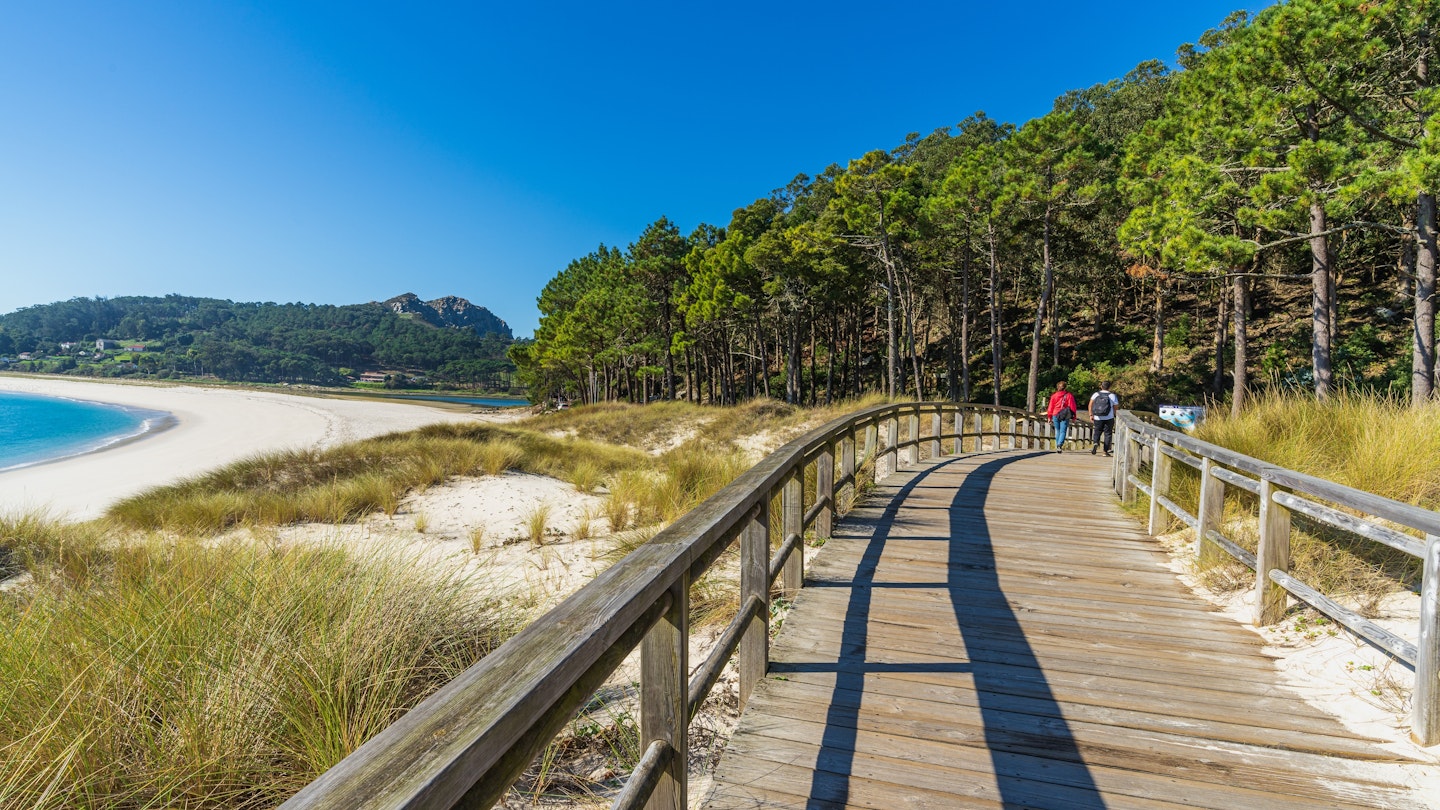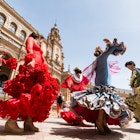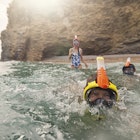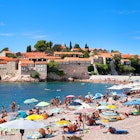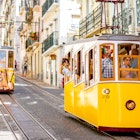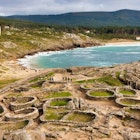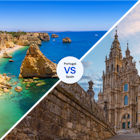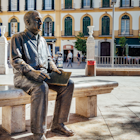Vigo, tucked into Spain’s far northwest corner, is remote, wet, green, misty and surrounded by water.
It’s perhaps the last place you’d expect to find islands with turquoise waters and white sand beaches. But a 45-minute boat ride away from Vigo’s city center are the Cíes Islands, part of the Unesco-recognized Atlantic Islands of Galicia National Park. Oft-cited examples of sustainable tourism and home to one of the loveliest beaches in the world, the Cíes Islands draw sun-seeking day-trippers and serious bird watchers alike; gulls, cormorants, terns, petrels and shearwaters, auks and gannets live on the island on a permanent basis.
Although the Camino de Santiago pilgrimage pulls hundreds of thousands of international visitors to Galicia every year, few make it to other parts of the region. If a chance to get off the beaten track and explore a little-visited city, or Galician food and wine aren’t sufficient draws, the Cíes Islands offer nature, active pursuits, fresh air and water and, if you’re lucky weather-wise, a bit of tropicality in an otherwise rainy corner of the world.
The islands – two of which, Monteagudo and Faro, are linked by a footbridge – can be approached as an easy day trip from Vigo or, during summer or Semana Santa, as an overnight stay. Either way, as a protected area the Cíes Islands are subject to several rules: visitors must request permission to visit in advance (more on this below); there are no garbage cans on the islands, so anything taken in must be taken out; loud noise is not allowed due to the birds; nothing is allowed to be removed from the island; it’s strictly prohibited to feed animals; and the only form of accommodation is park-sanctioned tents or campsites.

Top things to do on the Cíes Islands
There is an information booth not far from the pier on Monteagudo Island, which can provide details on active pursuits on the islands, and also rents kayaks and snorkeling equipment.
It’s worth noting that the weather on the Cíes Islands changes quickly and frequently; it was overcast and chilly when we visited in early April.
Go for a refreshing swim or snorkel
During summer months, the Cíes Islands’ white sand beaches and clear waters are, arguably, their biggest draw. The weather can get warm during this time of year, but keep in mind that this corner of the Atlantic Ocean clocks an average water temperature of 14.22° C (57.6° F), making a swim, no matter what time of year, refreshing to say the least.
The obvious beachy destination for most visitors is Praia de Rodas, located a short walk from the landing pier on Monteagudo Island and the longest, biggest stretch of sand on the island. It's a great place to snorkel as it's home to octopus, mussels; shellfish such as crabs, lobsters, spider crabs or barnacles; and fish including sole or mackerel. It can be hugely popular during the peak of summer, so if you prefer something a bit more intimate, head to the southern end of Faro Island, where Praia de Nosa Señora, located in a picturesque rocky cove that’s overlooked by a church, feels more secluded. Even more concealed, but situated a brief walk from the pier, is Praia das Figueiras, which is also an option.

Follow the islands' hiking routes
If you prefer to keep things dry, the Cíes Islands are great for land-based activities. The islands are home to four clear, well-maintained, relatively easy walking routes. Virtually obligatory is the 3.5km (2.1 mile) walk to Faro de Cíes, the lighthouse located on Faro Island’s highest point, on its southwestern corner. The route is uphill but not too challenging. As you ascend, around 1km (0.6 miles) from the lighthouse you’ll turn a corner and see the final backtracking ascent, the lighthouse intimidatingly perched on top of the mountain like a castle from an episode of Game of Thrones.
From the top there are amazing views of a deep fjord-like bay – a stark contrast with the white sand beaches you walked past – as well as dizzying panoramas over the switchbacks of the trail as well as of neighboring San Martiño Island. If you’re visiting on a day trip, don’t miss it. A worthwhile side-trip along this route is to Faro de Porto. The lighthouse here feels a bit more remote and although much lower, is perched at the edge of an impressive cliff.
In the opposite direction, on Cíes Island, a 2.5km (1.5 mile) trail leads to Faro do Peito, a lighthouse on the island’s less-visited northern shore, or 1.7km (1 mile) west to the clifftop viewpoint at Alto do Príncipe. Unfortunately, when we visited, work was being done to clear the island of invasive eucalyptus trees, and the trails were in disarray.
Take a boat trip
The Cíes Islands can also be approached on a boat trip via a sustainably minded, pre-approved private provider such as Bluscus. Get some friends together, charter a boat, and you’ll have the freedom to swim offshore across from otherwise inaccessible areas. It’s also the only way to visit the third and southernmost island in the Cíes Archipelago, San Martiño.

What to eat on the Cíes Islands
The Cíes Islands are part of a protected area and as such there’s an effort to leave as small a footprint as possible. But this is, after all, Spain, so food and drink aren’t just an afterthought.
At the pier, there’s Restaurante Rodas, a contemporary-feeling cafe/bar/restaurant with food and drinks at moderate prices; enjoy a café con leche or a chilled glass of Albariño while you wait for your boat.
A brief, easy walk south from the pier, the island’s campground has a large cafeteria. The moderately priced menu includes options such as octopus – a reminder that this is not your average summer camp canteen. There’s also a small grocery store, and campers have access to tables, microwave ovens, power outlets – just about everything one would need to self-cater.
Alternatively, if you’re on a day trip, bringing food is a great idea. Hit a branch of Gadis (a regional supermarket chain in Galicia with lots of local items) in Vigo and buy some queixo tetilla (a Galician cheese in the shape of a breast), empanadas (local-style pies stuffed with seafood), bread, sausages, maybe a bottle of wine, and have a Spanish-style picnic at one of the many granite picnic tables located near the paths, or on a blanket spread on the sand.
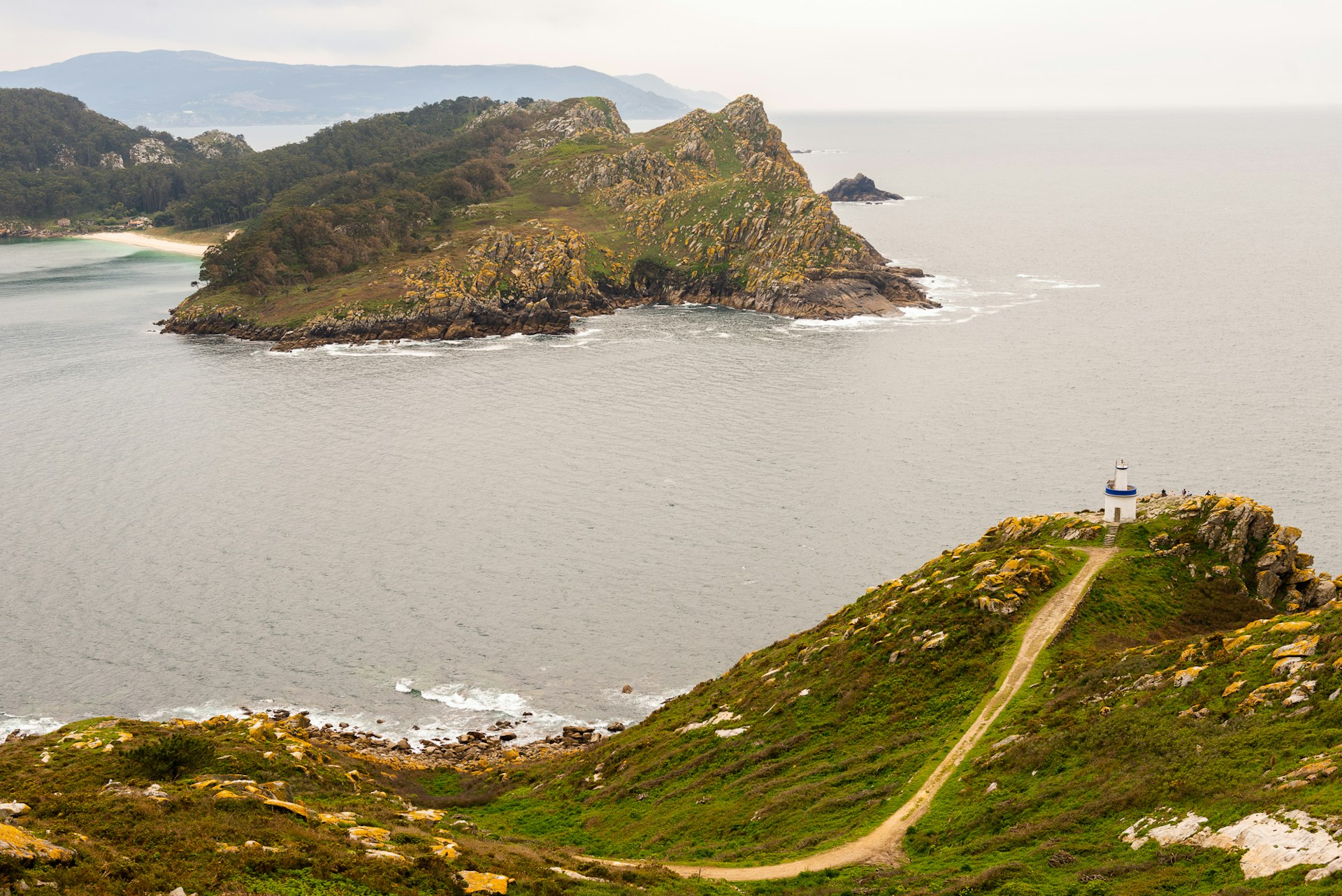
How to get to the Cíes Islands
Whether you visit the Cíes Islands as a day trip or an overnight stay, getting there involves a little bit of advance bureaucracy. The islands are part of a greater protected area that limits visitors to 450 people per day during most of the year, and 1800 per day during peak season.
To visit, it’s necessary to first obtain permission from the Xunta de Galicia, the local government. Go to the website as many as 90 days in advance, fill in some basic details, and you’ll be provided with a code that is required to purchase boat tickets. It’s free and the code is valid for two hours.
Code in hand, you can buy your boat ticket. Several companies operate ferries to the islands, including Bahía Sub, Cruceros Rías Baixas, Cruceros do Ulla, Mar de Ons, Nabia and RG Naviera. Most offer daily trips, with more frequent departures during summer. You can buy tickets online, but if you prefer to visit the offices in person, at least four of the boat companies are based in the building that shares space with Merca Express, next door to the pier (the same building where commuter ferry tickets are sold). Staff there can help you get a code and buy tickets, or you can simply pop in to see the various departure times.
The boat to the Cíes Islands takes 45 minutes; some ferries have a food and drink service on board.
Where to stay on the Cíes Islands
The Cíes Islands can be visited year-round, but staying overnight is only possible during Semana Santa (the week that precedes Easter) and summer (from May 15 to September 15). Tents are available to rent or you can book a plot and pitch your own. During certain summer holidays, the campsites can be full, so book ahead or shoot for a time outside of August if you prefer solitude.
The camping area has a cafeteria and shop, toilets, hot water showers (for a small fee), electrical outlets and even solar-powered air pumps to inflate your mattress.

